Ep.15: Naruto vol. 1 by Masashi Kishimoto
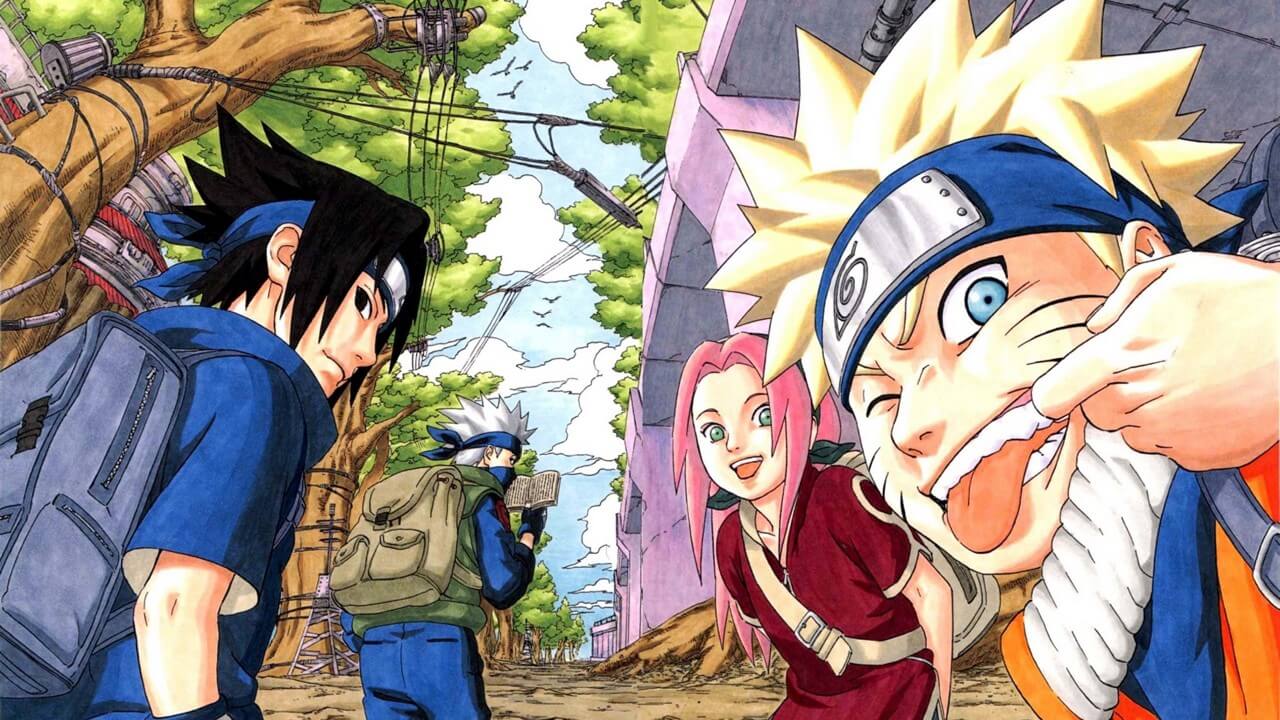
The Mangasplaining Crew take on “The World’s Most Popular Manga”, er, of the 2000s anyway, with Masashi Kishimoto’s NARUTO VOL 1! Is Naruto better comics than The Spider-Man? The Bat-Man? Listen and find out! Plus, in a special segment about kids manga, we welcome our very first guest! Big episode!
Powered by RedCircle
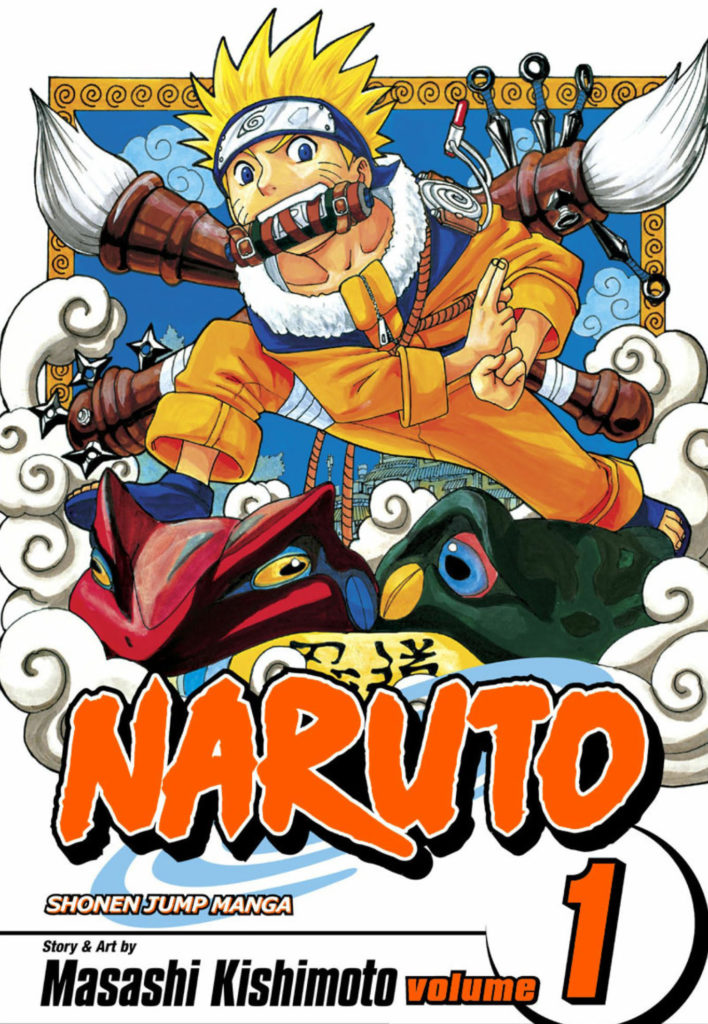
Naruto vol 1
By Masashi Kishimoto
Translated by Katy Bridges. English Adaptation by Jo Duffy.
Touch-Up and Lettering by Heidi Szykowny. Cover design, Graphics, and Layout by Sean Lee.
Editor in chief Jason Thompson. Series editor Joel Enos.
Published by VIZ Media (Print & Digital)
00:00 Before we get started: I know it’s going to seem like an advertisement, particularly after all the disclosure we’re about to do, but honestly, it’s literally never been easier to read along with an episode of Mangasplaining for cheap or free than this episode with Naruto.
First up, you can read every chapter of Naruto and literally tens of thousands of other pages of manga for 2 bucks a month with a Shonen Jump subscription: https://www.viz.com/shonenjump/chapters/naruto
Secondly, on that page they’ve made the first 3 chapters (half of the first volume) free to read, so you can get the jist.
Thirdly the book is orderable from basically every comic and book store, and they might even have copies on their shelves.
Finally, Naruto is available in physical form in basically every library in North America, AND is available for digital borrowing from many libraries as well through OverDrive. I just checked and Toronto Public Library has it, for example: https://www.torontopubliclibrary.ca/detail.jsp?Entt=RDM3439293&R=3439293
Plus, it’s possibly the most pirated comic series of all time. :-[
Anyway, just a heads-up: There’s lots of great ways to read comics for cheap or free without pirating. Go forth and enjoy!
01:15 You heard what David said in the intro, 250 million copies! It’s legit huge. My copy of volume 1 has “The World’s Most Popular Manga!” written on the back. Speaking of sales, in researching this episode I found on the Wikipedia for Kishimoto-sensei that apparently the various volumes of Naruto accounted for 10% of all manga sold in 2006. Nuts.
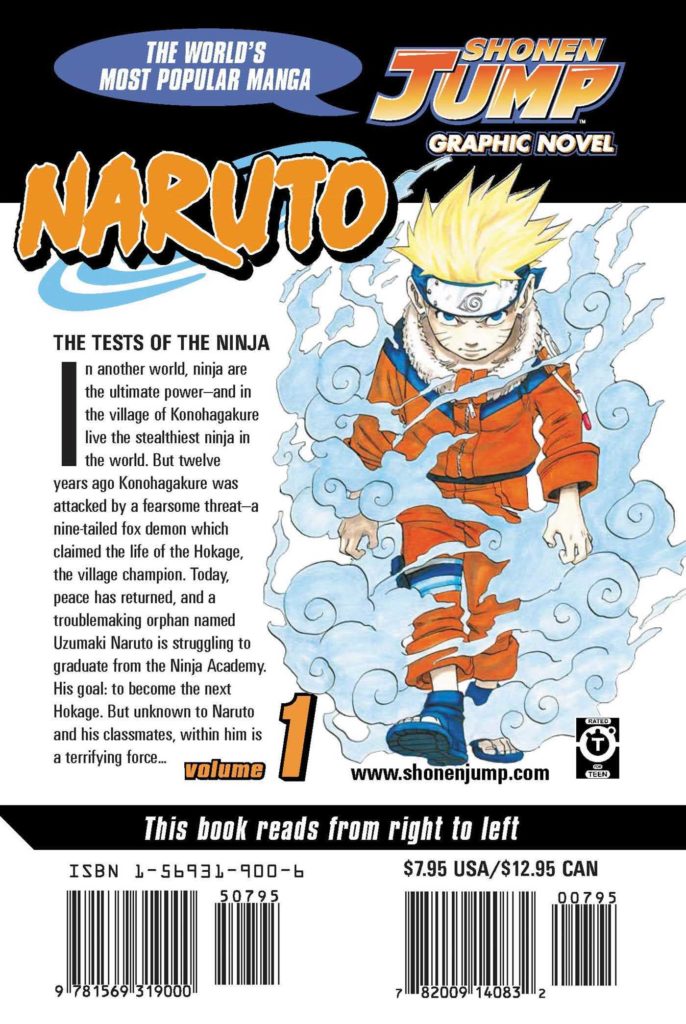
2:55 Borders was a U.S. bookstore chain that went out of business in 2011… so yeah, Deb read this series a long time ago. The first printing was in 2003. My copy is the 36th printing, from 2021.
5:55 Yeah, there are a lot of volumes of this series. This is definitely the longest series we’ve read to date, with 72 volumes of Naruto released. That kinda means that this is actually the least we’ve read of any series overall, by percentages, which is also kinda crazy. I’m sure there are/were dedicated Naruto podcasts out there if you wanna deep-dive discussion of the series. 🙂
7:55 So it’s true, in the rapidly-increasing “conflict-of-interest’ sweepstakes that is trying to give an unbiased review on this podcast, Christopher interviewed Kishimoto-sensei, creator of Naruto, a few years back in 2015, in celebration of the end of the manga serialization in North America. You can see the whole interview on Youtube, but the sad thing is you never get a shot of the crowd, which was truly overwhelming.
As Christopher mentions, he conducted two interviews with Kishimoto, one of which was at the Apple store in Soho and while there’s no official video of that, if you poke around… 🙂
MEANWHILE, in Googling to find this link, we found that Deb wrote a _complete_ transcription of the event for AnimeNewsNetwork!
https://www.animenewsnetwork.com/interview/2015-10-14/masashi-kishimoto-at-new-york-comic-con/.94188
Which… dang. Thanks Deb! Also David is an Editor at Shonen Jump. So like, conflict-of-interest out-of-the-way, let’s talk about some Naruto!
10:30 Yeah, it’s strange to talk about this now, because One Piece is still going in Japan right now and Naruto started after it, and ended before it, but these two series, and creators, were rivals during Naruto’s entire run. With, as mentioned briefly, Tite Kubo’s Bleach in the mix and occasionally taking second place or even top-spot, depending on what was going on in this particular series. It’s fascinating, because One Piece is the undisputed Kind of shonen manga in Japan, but that really never was the case here.
12:12 Chris says “Second volume” but means second chapter. We just talk about volume 1 in this one.
14:05 Reader surveys are interesting! Deb talks about them here, but if you want to read an article about it, check this out: https://www.otaquest.com/weekly-shonen-jump-rankings/
Also: “I think Chris probably has a better explanation, but I have a short one” is actually a hilarious burn.
18:00 Weekly Shonen Jump’s printed 2019 sales numbers in Japan averaged about 1.6 million copies a week. Also, we mention that it’s weekly (every week), but there’s usually a few double-issues each year, meaning manga-ka do occasionally get a “week off” occasionally. Usually 48 issues come out in a 52 week year.
Unfortunately there’s no printed Shonen Jump magazine in North America anymore, just the digital, but at $2 a month digital is a hell of a good deal: https://www.viz.com/shonenjump

20:05 The introduction of Kakashi really is good, but we’re already using a lot of art this episode and spoiling a few things, we need to leave a few little bits for you to read and enjoy on your own. 🙂 No images here, and unless what we’re discussing hinges on the images, we probably won’t include it from this point onwards.
20:45 Here’s the moment that Chip’s talking about as being a great action scene, with Kakashi fighting Sasuke in the woods, a perspective shot with spinning blades.
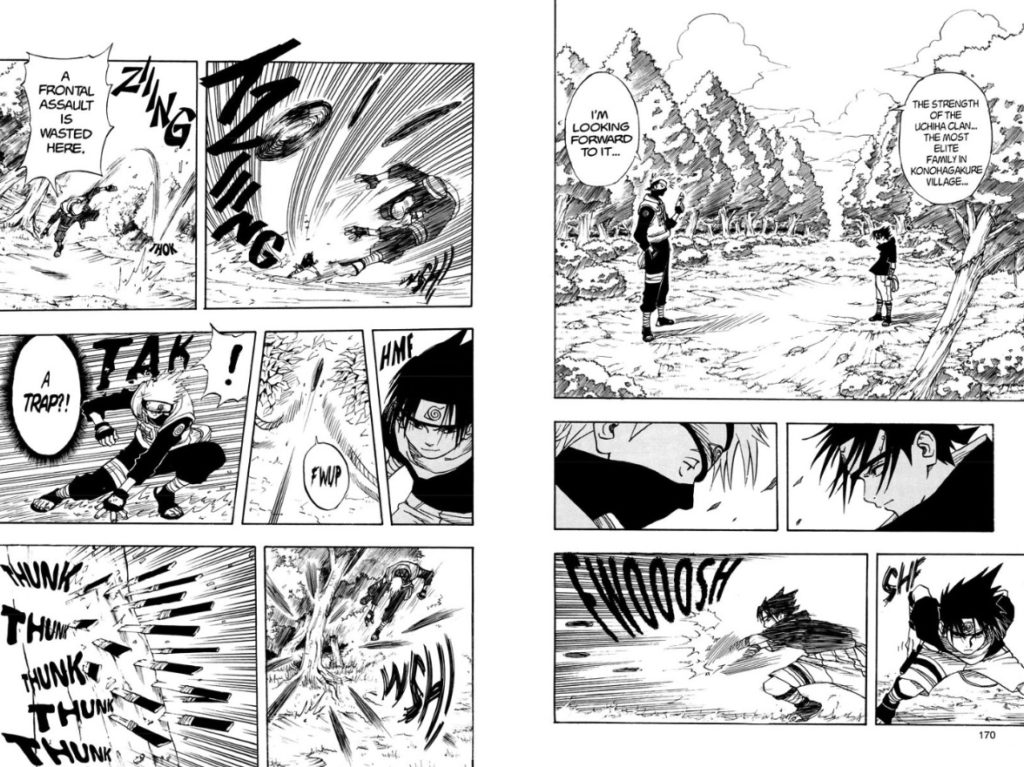
21:20 I’m sure it’s a discussion for another time, but girls kinda get the short-end of the stick in shonen manga a lot of the time. Sakura changes a lot as a character, but there are a lot of people who stan her even today who think she was done dirty by the series. Her introduction in the first volume is, well, like Chip says.
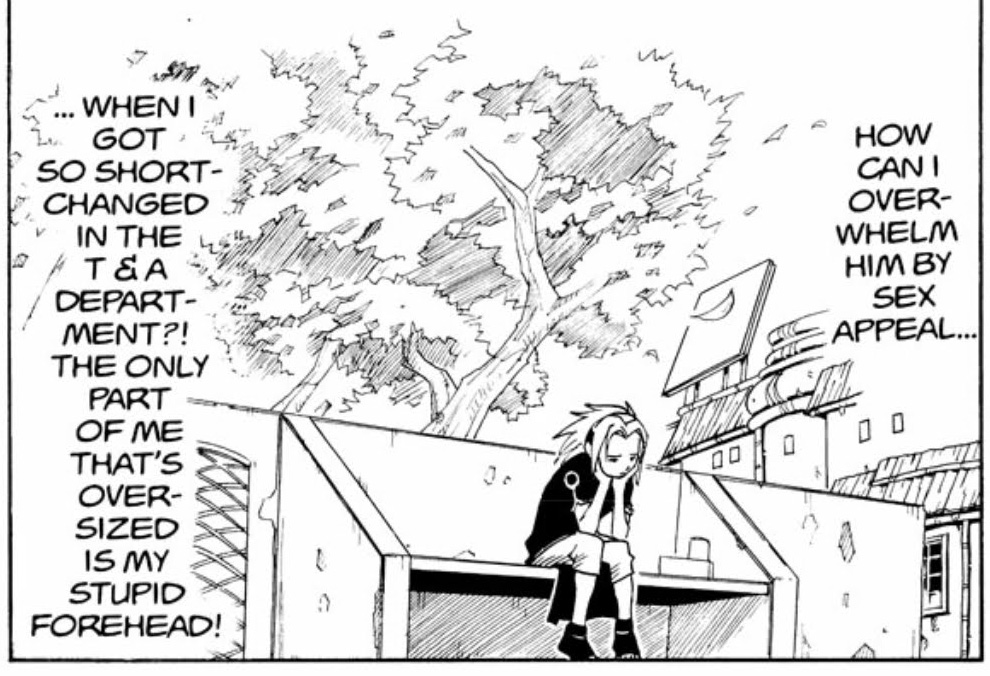
21:30 So the person who tweeted this set their account to private, so sadly we can’t share that tweet. Sorry.
22:30 My god, any time we can all laugh at Chip all at the same time is delightful.
22:35 The nosebleeds under discussion from Naruto volume 1:
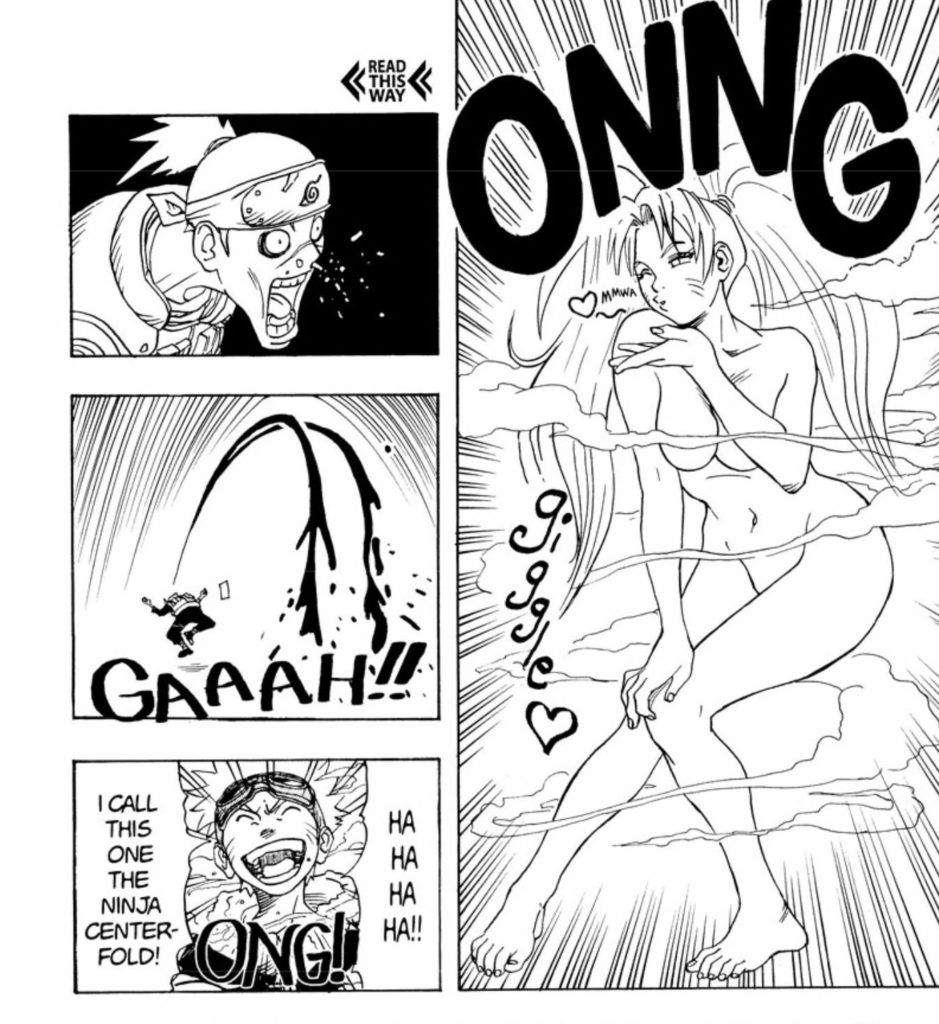
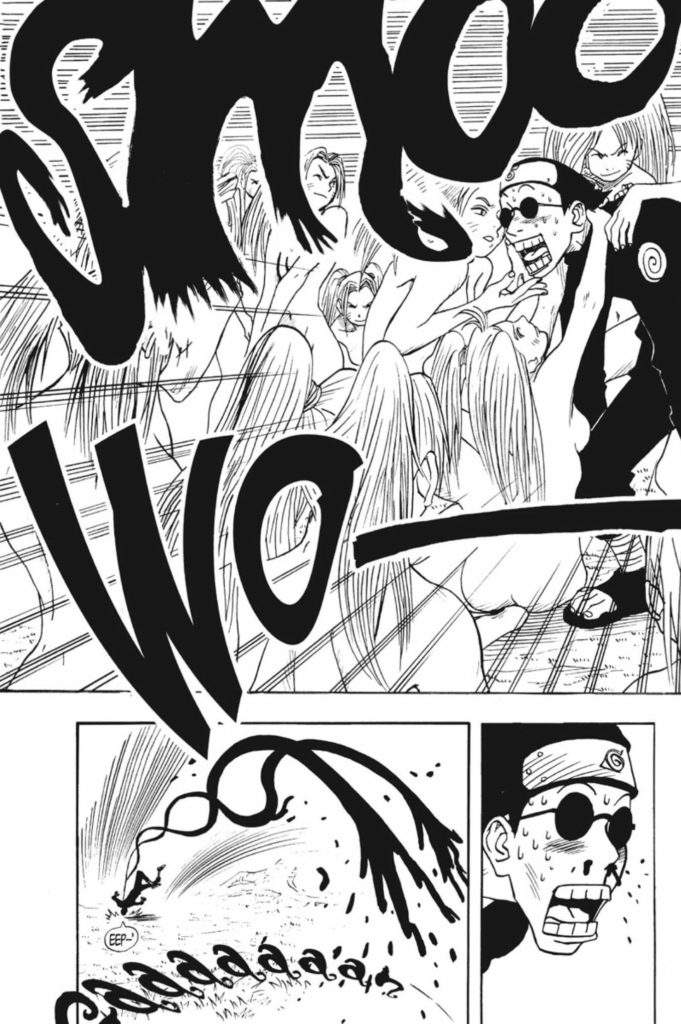
So yeah, Naruto turns into a naked lady and makes dudes so excited they have spontaneous nosebleeds.
But where does that come from? Well, there’s a lot written about that. Here’s a link to an even longer description than we offer in the episode:
As mentioned, Yasuji Tanioka (1942-1999) is thought to have been the first mangaka to include this trope in his manga. There’s… none of his work in English and only a few small excerpts online thanks to the saints at Lambiek bookstore. Here’s a little bit of biographical info: https://www.lambiek.net/artists/t/tanioka_yasuji.htm
24:50 So flashing back briefly to last week’s Paradise Kiss episode, we get to that sort of “What the f**k can you believe this shit?” face that characters make while turning to the reader, sometimes. Yukari/Caroline made it allllll the time, especially in the first few chapters. David referred to it as a “Face Fail” but I have no idea what the ‘official’ name for it is. Here’s an example:
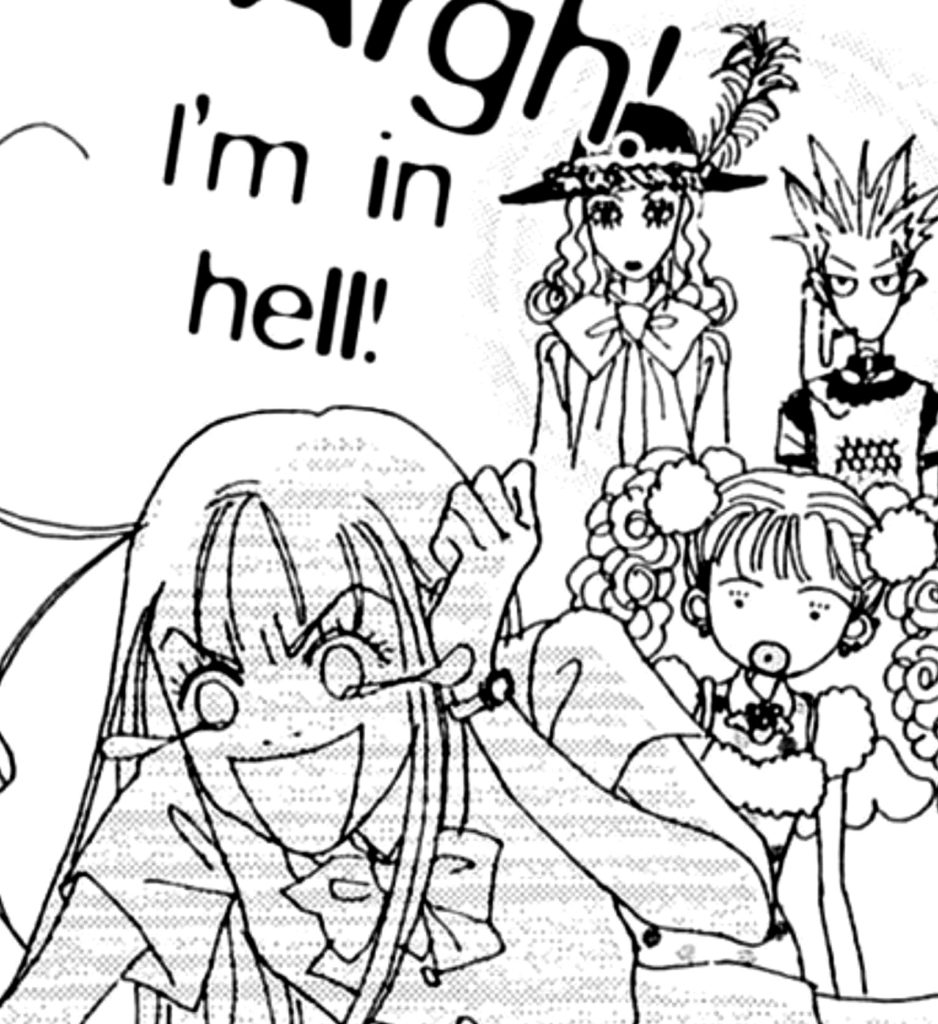
26:00 Wow, we’re really Mangasplaining this week! First David brings up manga sweat drops flying off of characters meaning stress, then Deb brings out the anger popping-head-vein, and later… there’s kancho. A lot of work has been done already to explain these bits of visual shorthand from Japanese manga and anime:
Check out that article, it’s a really good, basic introduction!
28:00 David is talking about Masashi Kishimoto here again. Kishimoto-sensei did grow up out in the countryside, in Okayama Prefecture (half-way between Osaka and Hiroshima), and has a twin brother! He was a big fan of Dragonball creator Akira Toriyama’s work as a kid, fell out of love with comics and got into sports as a teen, and then discovered AKIRA and went to art-college to learn to draw manga. He moved to Tokyo to follow his dream… and succeeded. Just like a shonen manga.
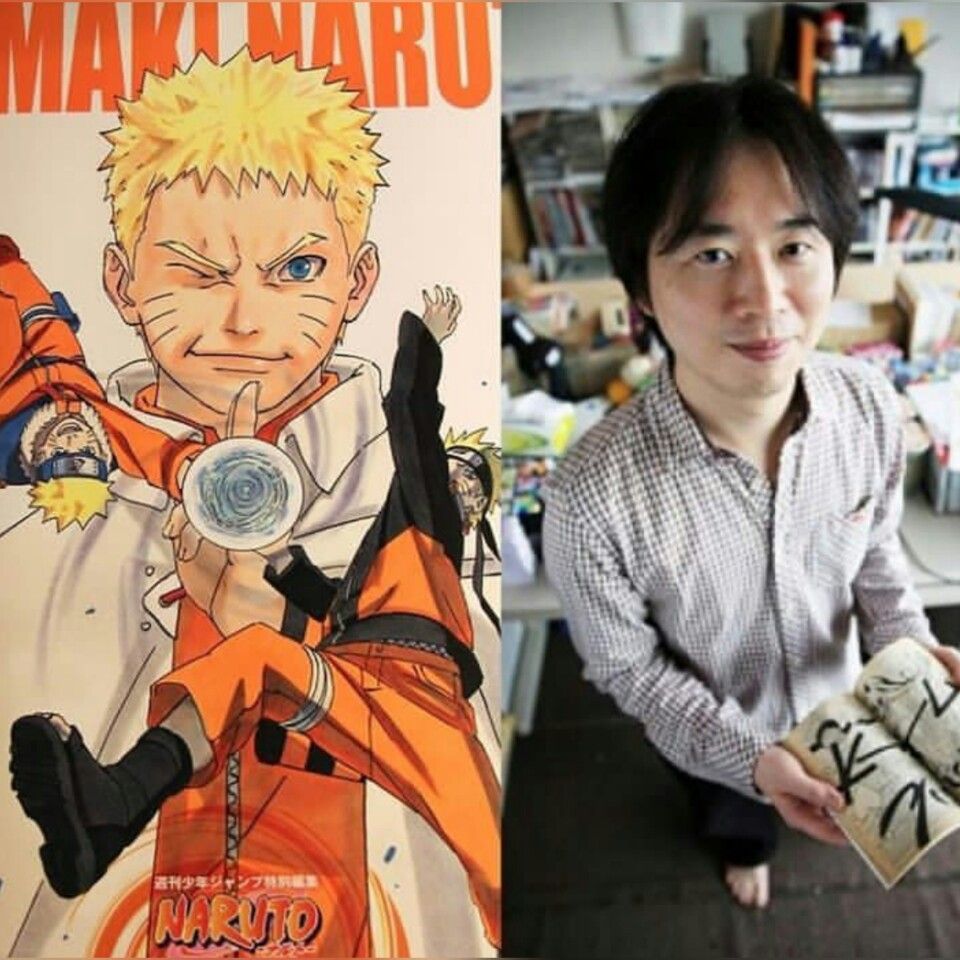
31:30 Naruto’s first teacher, Iruka, sacrifices himself (luckily doesn’t die) for his student in the first chapter. In doing so, we learn Iruka’s whole backstory, and then that kinda makes him… less interesting going forward? It made so much sense to introduce Kakashi as the teacher figure. But this backstory does make Iruka into a grounded figure that Naruto could always return to, as David gets into in the next few minutes. I think Deb’s right about this being a shockingly good first-chapter of a manga, one of the very best. The fact that the core of the series changes 2 or 3 chapters later and the series is fully grounded by the end of the first volume? Also really speaks to its overall strength and why it’s so popular.
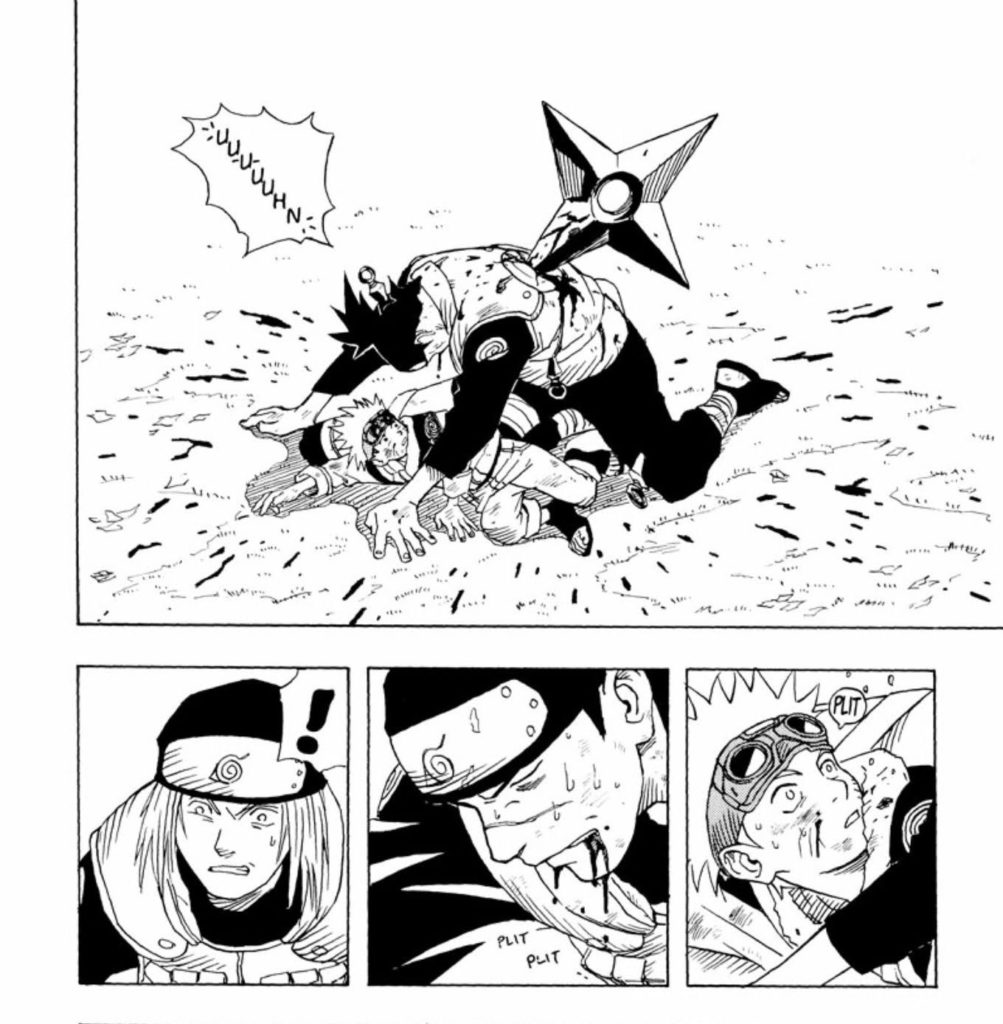
Although it does make this panel kind of funny in retrospect, because, no you won’t be, actually.
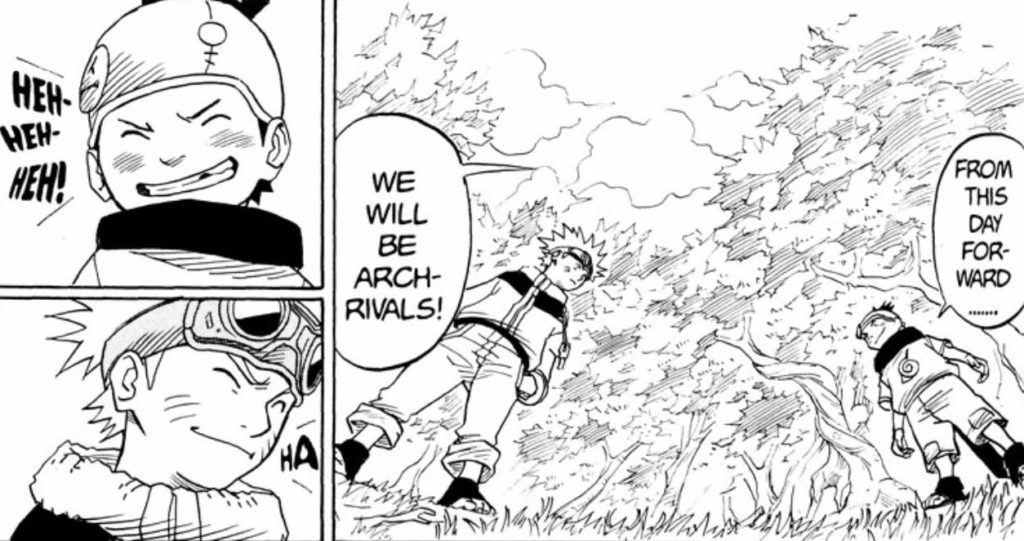
33:20 That Naruto ugly crying face is utterly amazing, but to be fair, Oda-sensei (creator of One Piece) is perhaps the king of drawing gross, snotty ugly-crying.
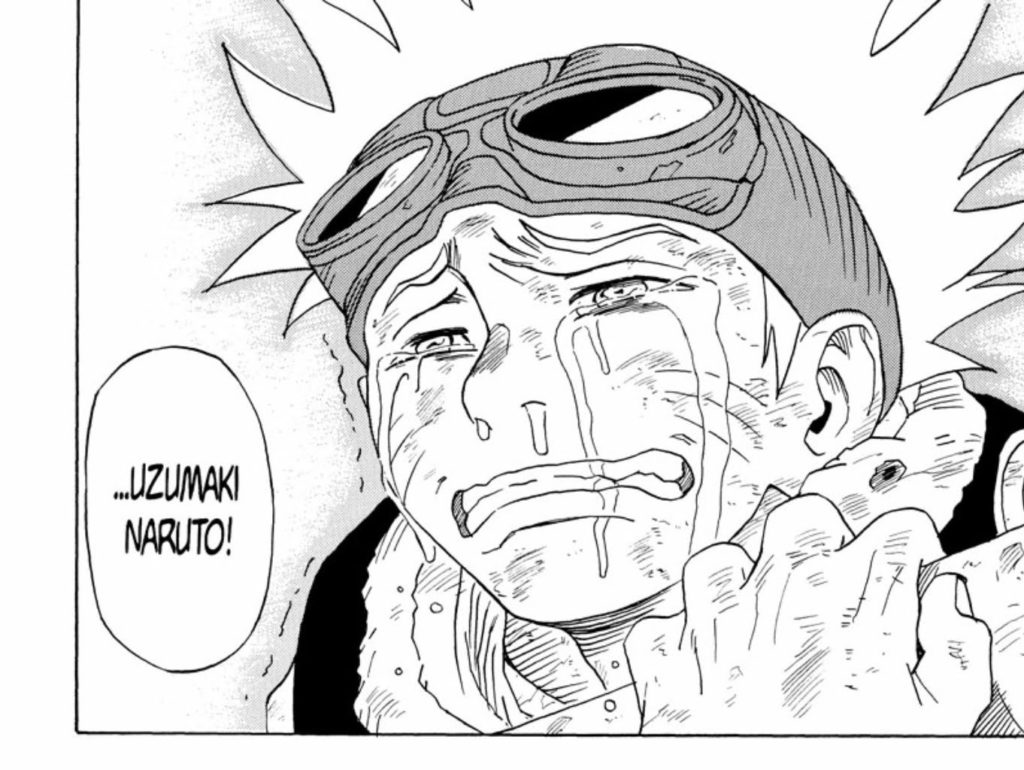
33:40 People love that Kakashi!
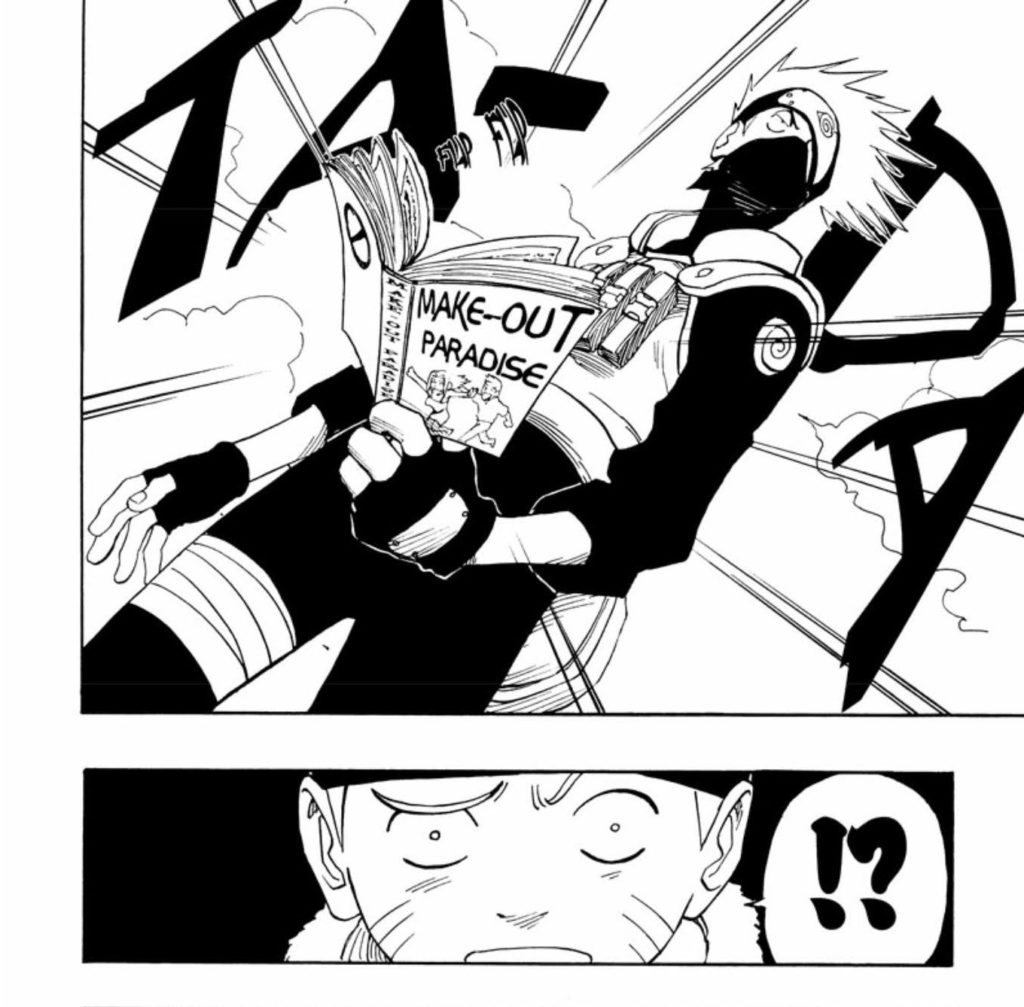
34:20 SPOILERS!
38:00 The cover under discussion for color art again this time:

39:00 Quick note: Christopher here. So, I have a different type of microphone than everyone else, and if I turn my head even a little the sound can drop right out. That happens pretty badly over the next 4 minutes as I’m looking for reference pages. I’m sorry!
So here’s page 52 first, since Christopher mentions it:

Talking about fighting, mark-making, and more. Christopher is talking about the character design changing quite a bit over the course of volume 1.
Here’s what Naruto was drawn like in the early sketches before chapter 1 was finalized:
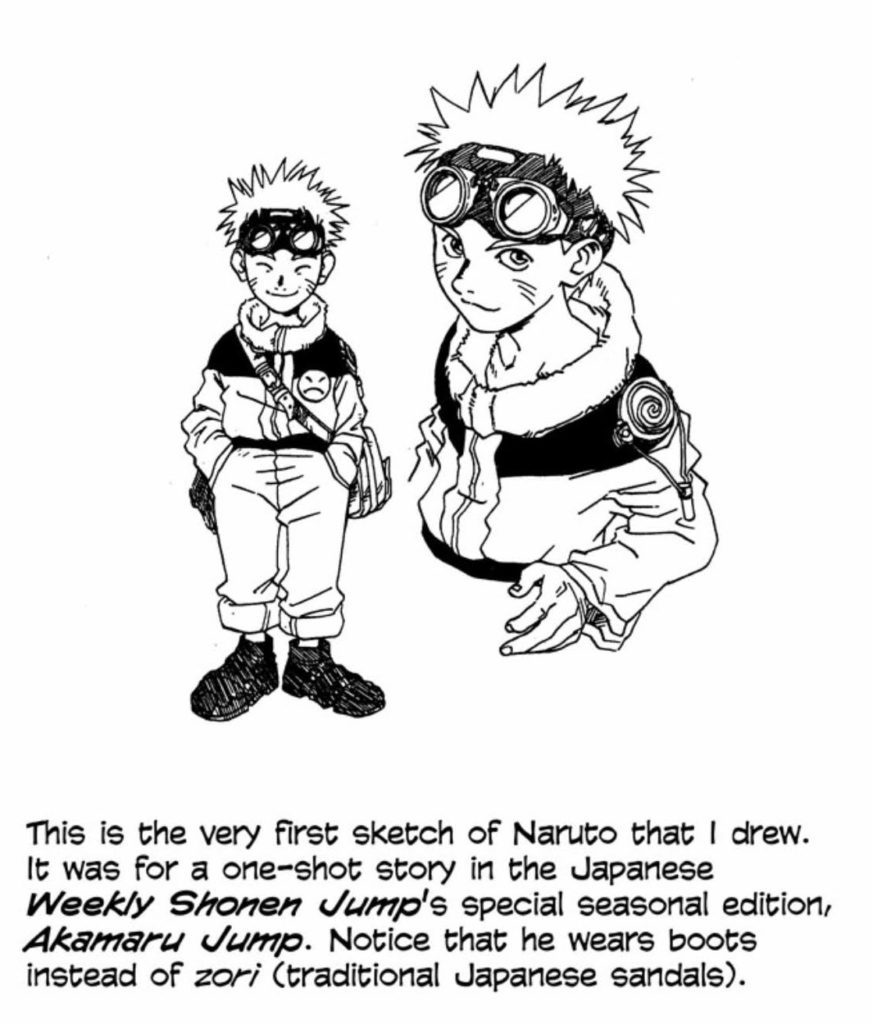
As mentioned on Page 35, here’s what he’s drawn like within chapter 1, he’s a bit taller than the sketch, but still very short, and he looks like a little kid:
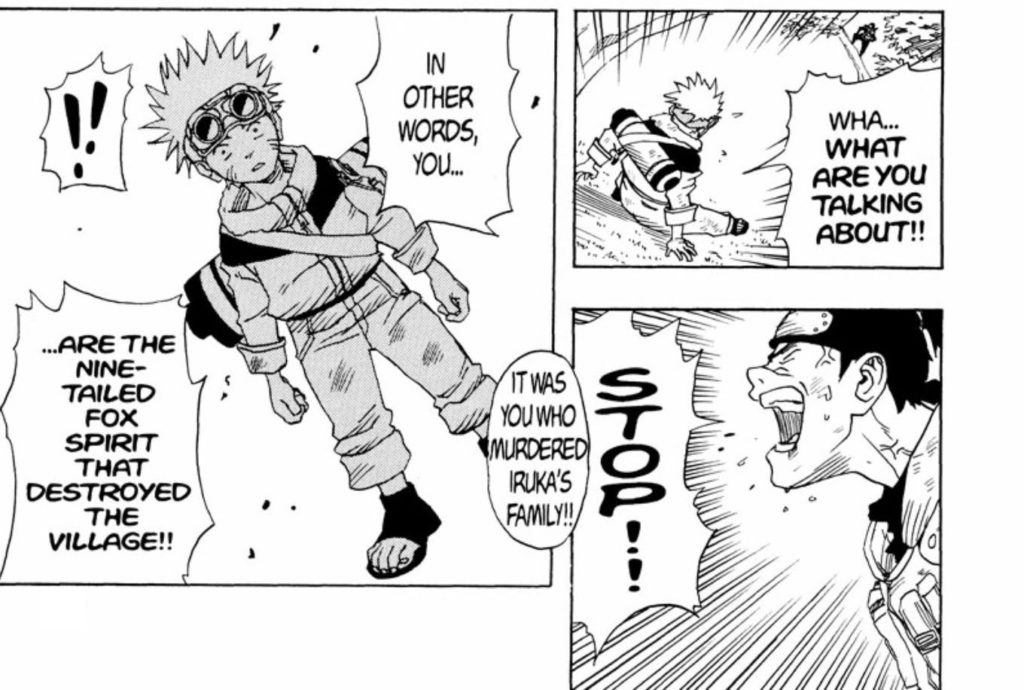
But then by the end of the first volume, he’s still short for his age, but the way he’s drawn and moves, he’s probably a foot-taller, all told, based on how he’s drawn:
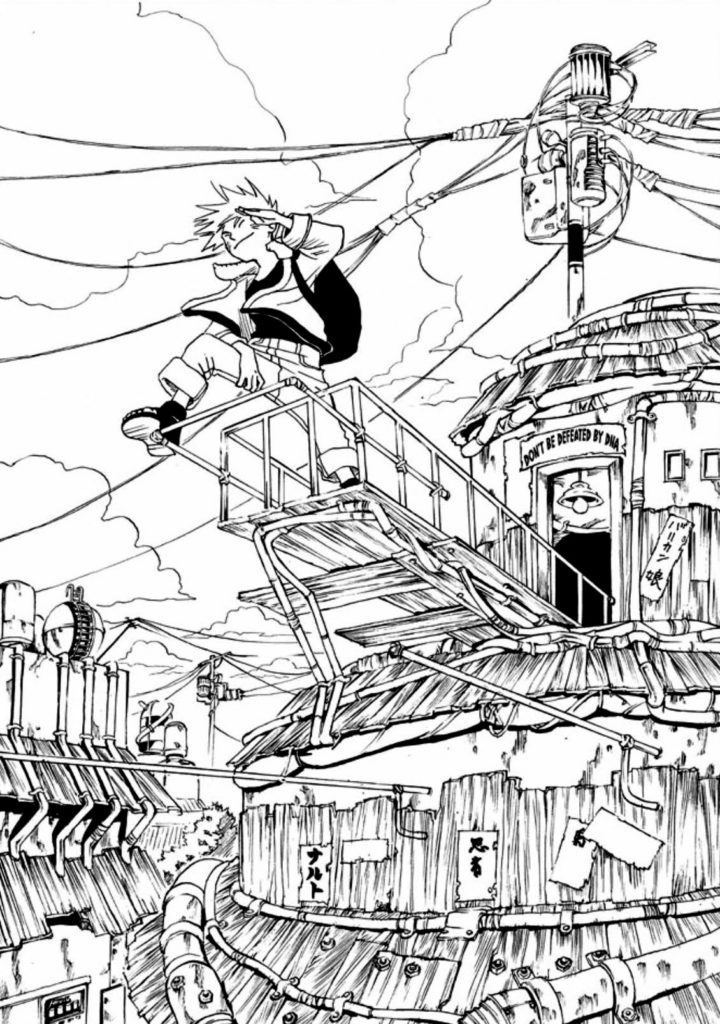
By the end of volume 1, Kishimoto has really figured out how he wants to draw these characters, and they become shonen heroes by the end, even though they’re all little kids running around.
Meanwhile, Christopher also talks about the language of shonen fight manga, riffing off of something David was talking about a few episodes back. You can see every movement in this sequence which features Kakashi and Sasuke fighting, and totally follow it:
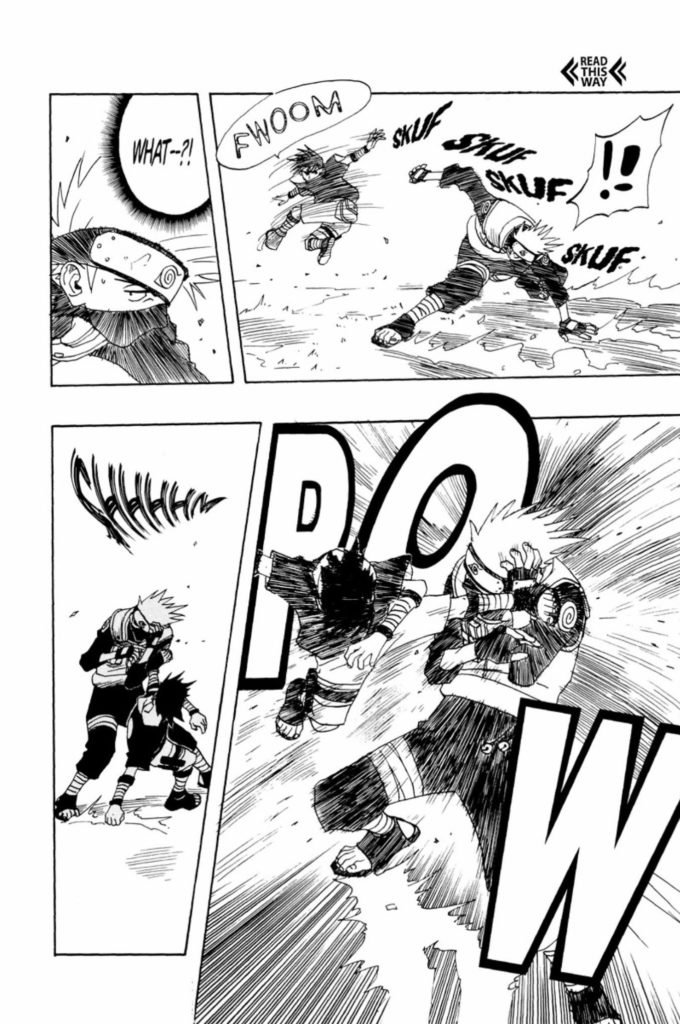
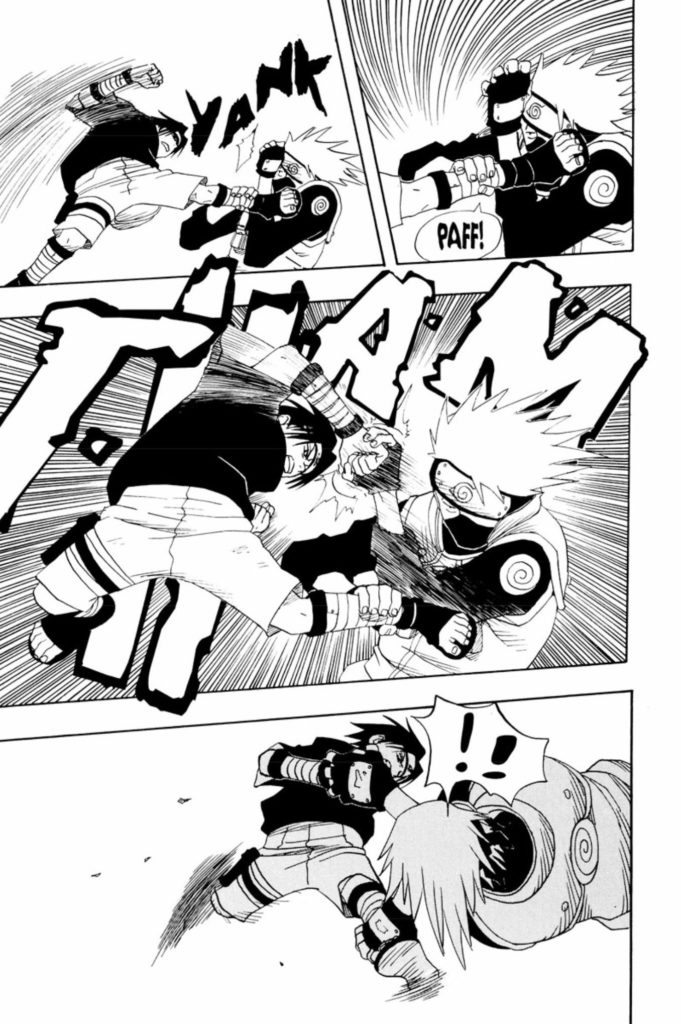
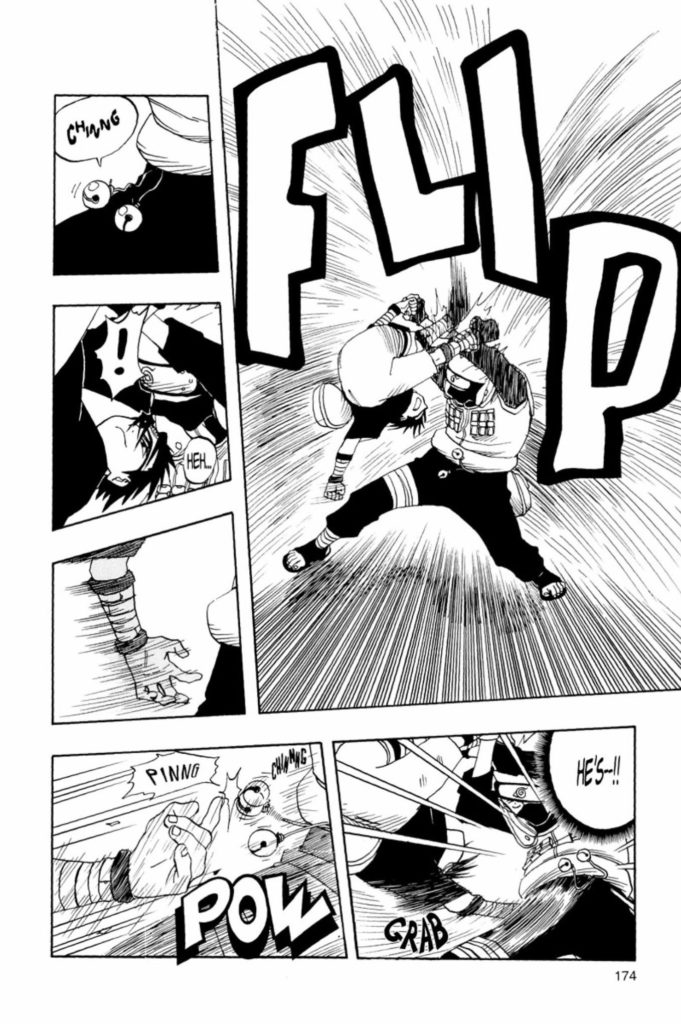
Like, that’s a CLEAR sequence of events, and it’s just not something you find in a lot of western comic books, taking three pages to show what’s probably 2-3 seconds of action, with action-to-action transitions. Really cool, and something Naruto does very well!
44:20 Deb mentions her favourite sequence, which is Naruto dashing in to fight Kakashi, which makes Kakashi seem like the coolest dude in the world (he kinda is, too).
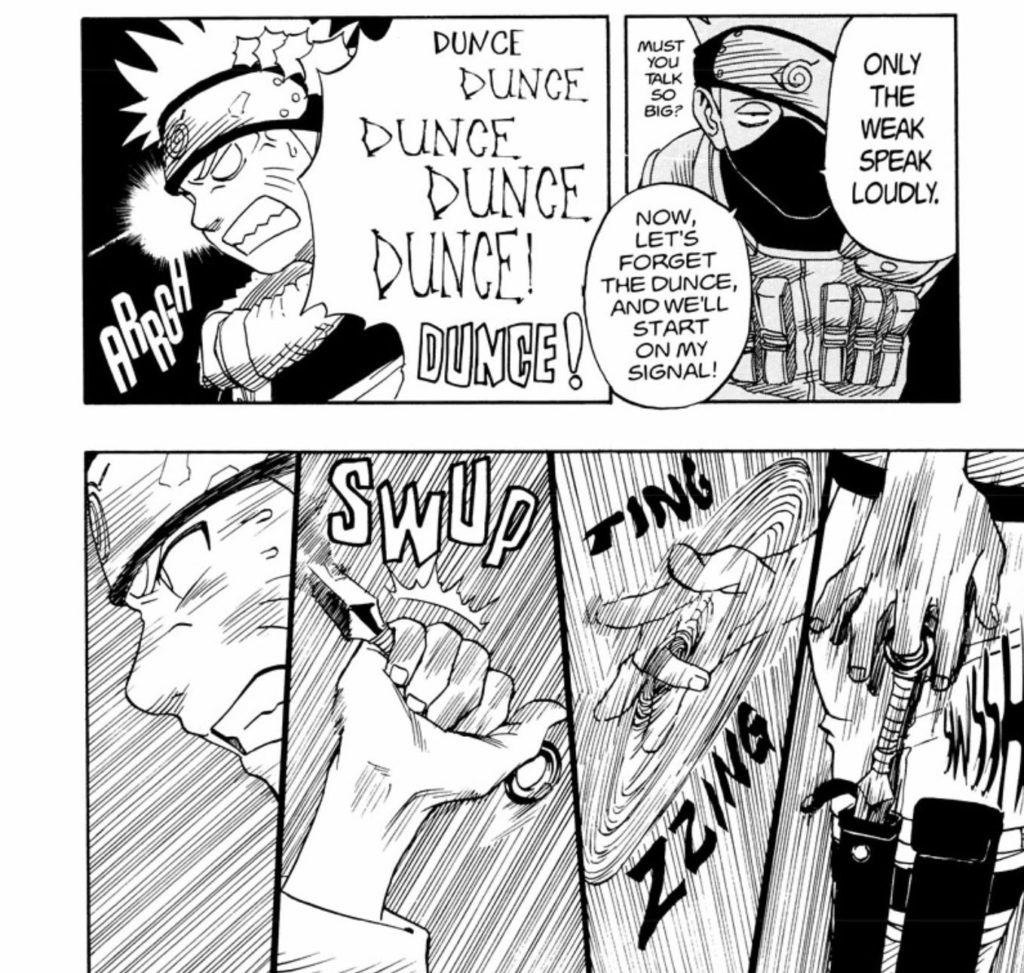

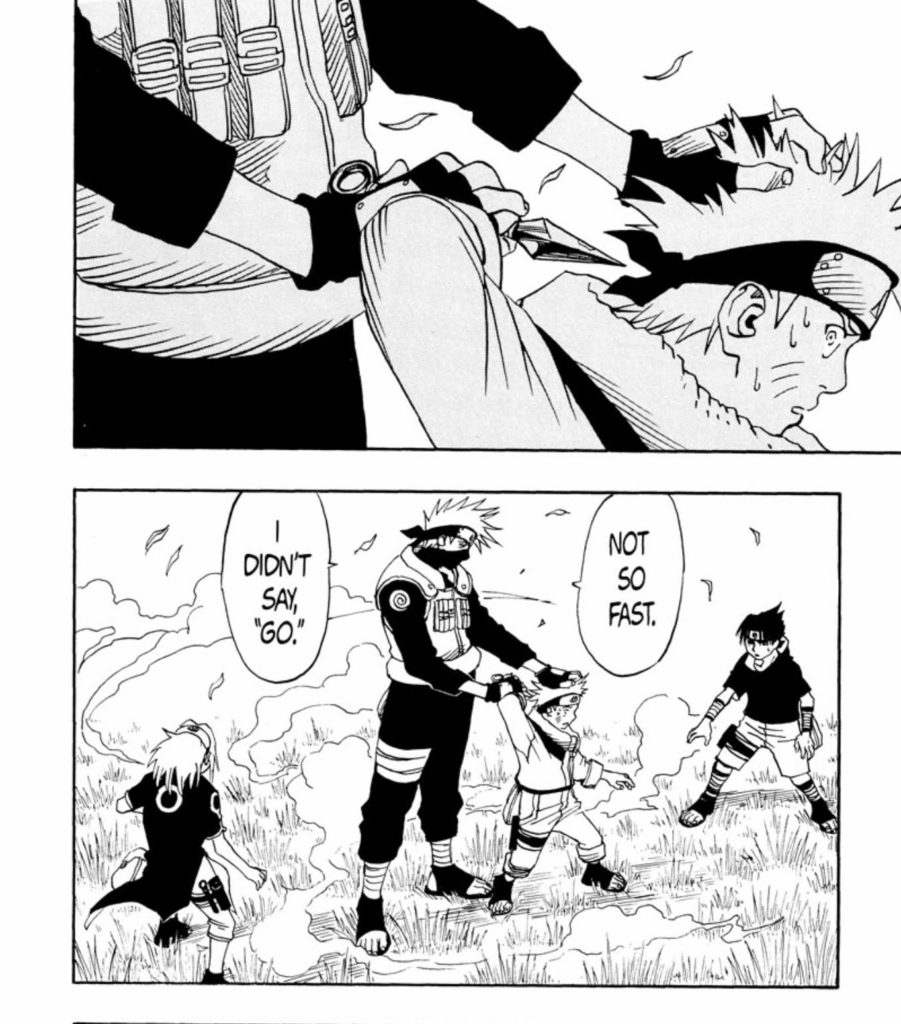
45:00 David’s favourite sequence begins on page 133, and ends with kancho, the “One Thousand Years of Death!” technique.
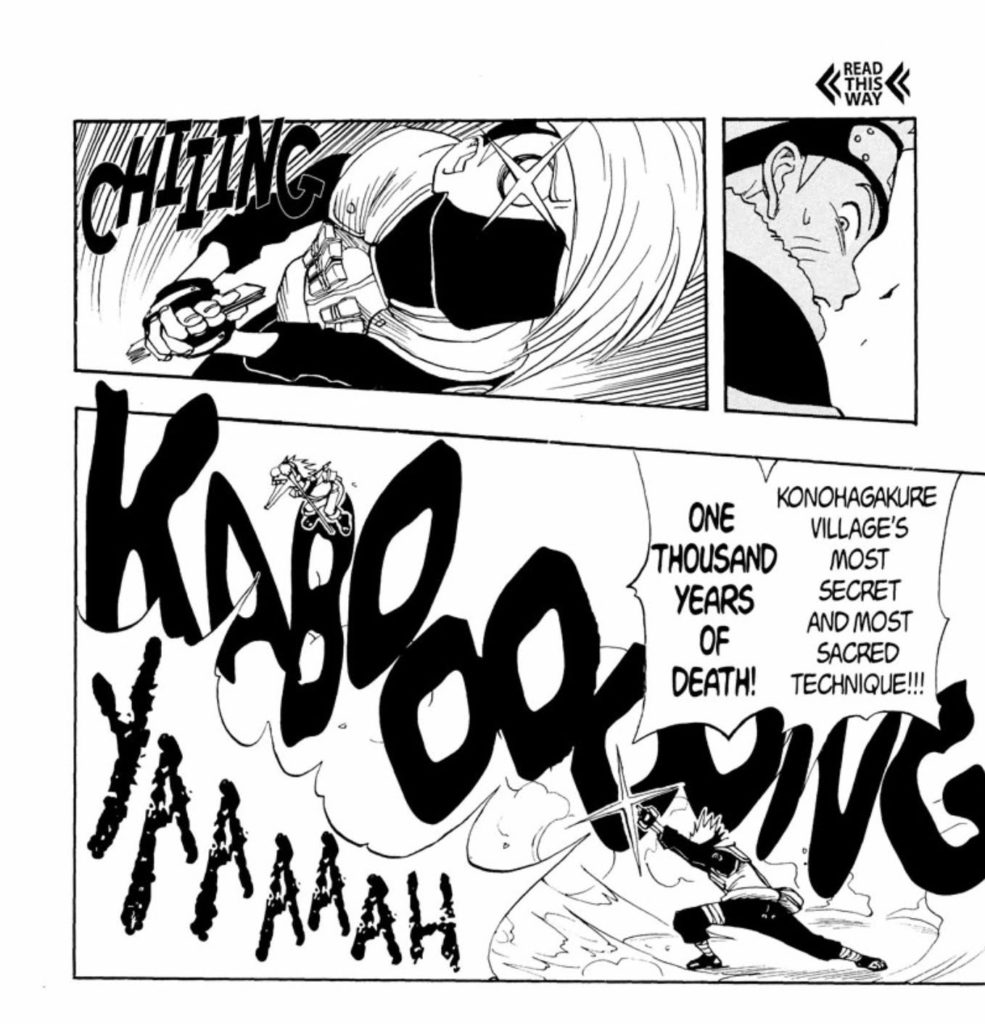
And kancho, yeah, that’s a WHOLE thing. It’s funny, especially for kids. But hugely problematic.
45:45 “The Butt Trope”. It’s called “kancho”, and boys put their hands together and make a finger gun and then just poke people in the but. It’s a slang version of the word “enema” in Japanese, and like… yeah. You just got read this Wikipedia entry.
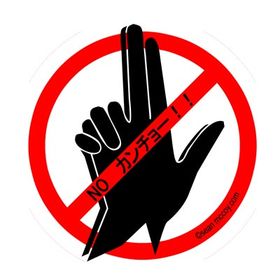
48:45 Gotta clear that throat and roll up your sleeves before you dig into the X-Men. And offer up… some real takes. Like, I like the Jim Lee stuff too, but… Wow.
50:30 Wow, and now some hot Sasuke takes too. Dang. David going all in.
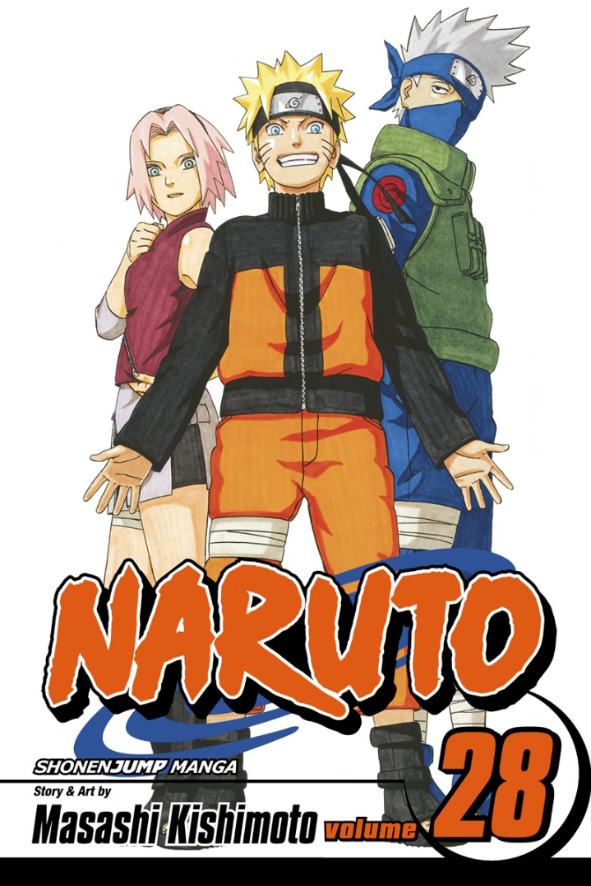
51:20 The time-skip. We talk about this a bunch, so we should probably actually explain it here. Basically, lots of shonen manga have a “time skip” period where the story gets to a point where characters need to train and train because they’re told the next big thing is going to happen in X amount of time. So the story skips over that material (for the most part) and we get reintroduced to the characters after that time has passed. It’s a great way to good sales, provide a new jumping-on point for readers that fell off of the series during serialization, to do a slight re-tooling of the series, and, as David mentions, to introduce new costumes and new merch. 🙂
For Naruto, Part 1 runs from volume 1 to half way through volume 27. The last half of volume 27 are some short stories set in the past featuring Kakashi. During these shorts the time-skip happens, and Part 2 begins with the first page of Volume 28.
Interestingly, in the anime the stories that take place after the time skip are called Naruto: Shippuden, but there’s no distinction in the naming of the manga. This also, and most famously, happens with the manga Dragonball, by Akira Toriyama, which is also just called Dragonball from start to finish, in Japan. However, because that series was introduced to North America so late in its run, it was broken into two different titles, Dragonball and Dragonball Z, with Z taking place after the time-skip, and the English manga naming being the same as the anime naming scheme. Manga really did go from zero-to-sixty in the early 2000s.
55:00 No, this is a real thing. Check this out, the ultimate “canon” guide of anime, and for Naruto specifically: https://www.animefillerlist.com/shows/naruto
So yeah, in the anime episodes 136-219 are basically all “original” stories, which fans consider ‘filler’ or ‘not canon’. I dunno, it’s more Naruto anime for people who like anime.
56:10 It’s worth noting, things are a little better today for manga-ka like Kohei Horokoshi, creator of My Hero Academia, as anime is now created as seasons, that air whenever there’s enough manga for them to adapt into a new season. There’s still immense pressure, but it’s not quite as bad.
But, yeah, “Does this matter?” affects most of North American superhero comics, as well as bunches of anime.
Wanna watch a 10-minute explainer video about it from an obscure anime channel? Here you go!
57:00 David with a third hot take, that Bleach never dropped off. Please don’t come for him on that. That’ll have to be a bonus episode.
1:00:00 You heard it here from Deb: “Naruto is good for kids to read, prissy parents notwithstanding.”
1:01:30 Yeah, I bought a light novel. He loved it. We’re gonna have to do a light-novel episode at some point.
1:04:45 Damn, we got another good quote outta this episode.
“Naruto is better than Spider-Man”
Chip Zdarsky, author of The Amazing Spider-Man
…and that’s Naruto! Now it’s time for…
1:05:33 THE BREAK
It’s time for our question of the week!
This week it comes from David Bednar, @ykarps on twitter:
Akira’s cool for adults- whats good starter manga for kids?
-David Bednar / @ykarps
So we decided to go to an expert, and start a whole new segment:
Mangasplaining: Listen To Me!
David reached out to our very good friend, Eva Volin, Supervising Children’s Librarian for the Alameda Free Library in Alameda California.
Eva says all kinds of great stuff about manga, REALLY breaks it down, which is super-awesome. You should totally be listening to what she has to say which gives a tonnnnn of context for kids manga, how it exists in Japan, and how it is licensed into North America. She says some really interesting stuff too, about gendering books, because kids will try stuff out that isn’t directly ‘aimed’ at them if no one is looking or judging their choices. Who says shonen is for boys and shojo is for girls? 😉
So all of that said, here’s the actual list of titles she recommended:
Young Readers, Ages 6-9:
Dinosaur Hour, Histoshi Shioya, VIZ Media (1-shot)
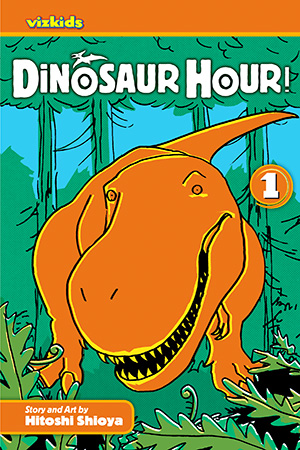
Fluffy Fluffy Cinamaroll, Yuki Tsukirino, VIZ Media (5 volumes)
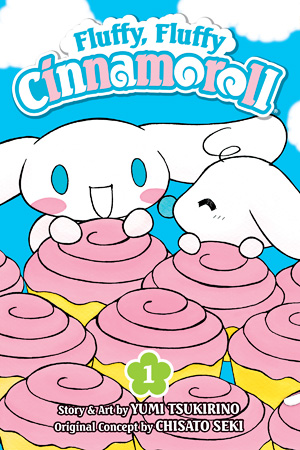
Cowa, Akira Toriyama, VIZ Media (1 volume, out of print)
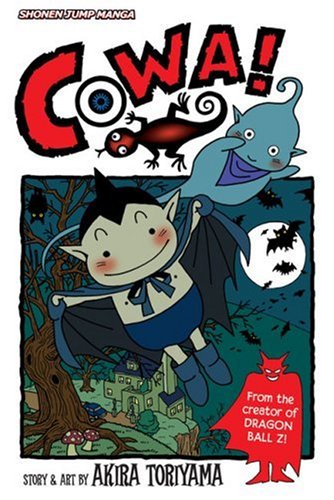
Middle Grade, Ages 8-12
Chi’s Sweet Home, Kanata Konami, Kodansha (Multiple Volumes, Editions, from Kodansha / Vertical)
Also from the same author: Chi’s Sweet Home, Fuku Fuku Kitten Tales, Chi’s Sweet Adventures, Sue & Tai-chan.
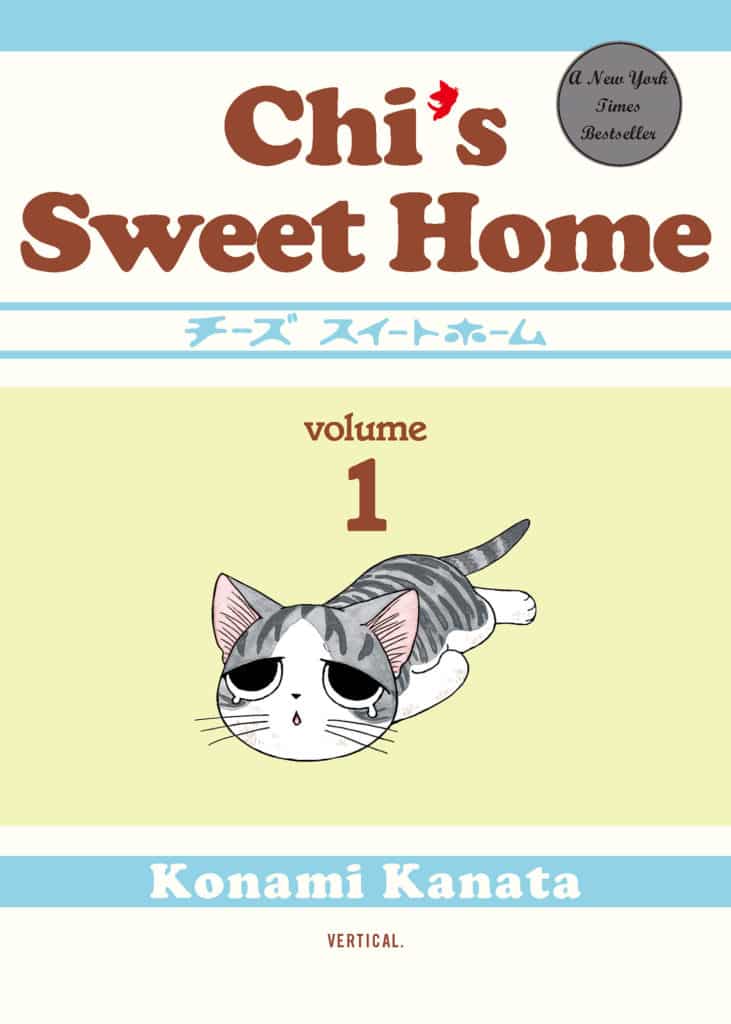
Nicola Traveling Around the Demon’s World by Asaya Miyanaga, Seven Seas (Ongoing)
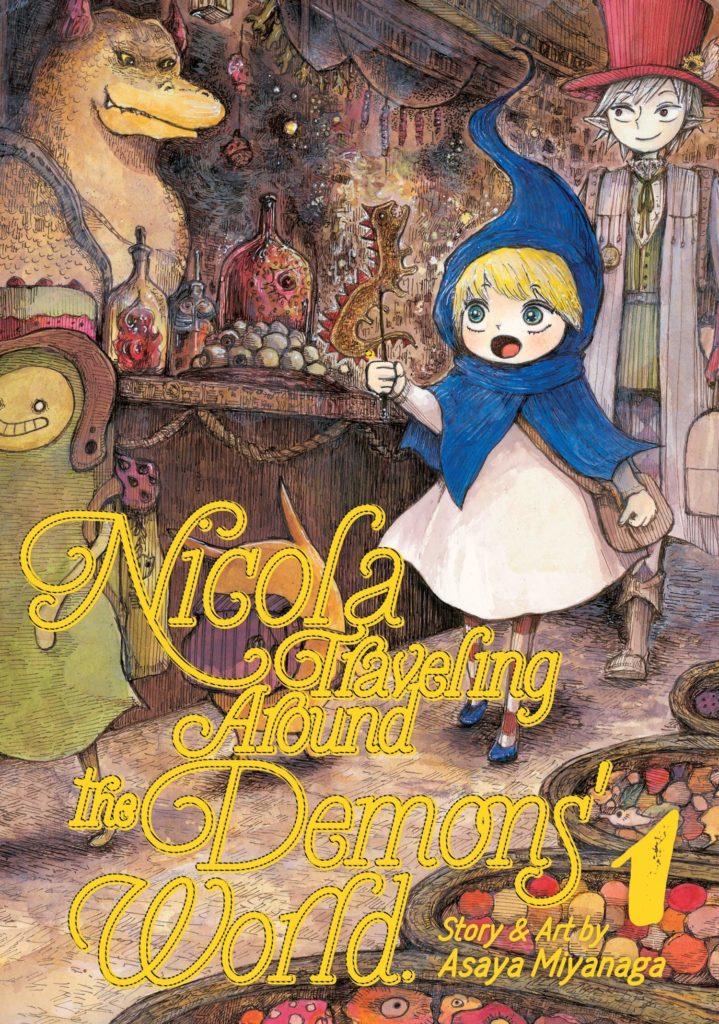
Yotsuba&, Kiyohiko Azuma, Yen Press (15 Volumes)
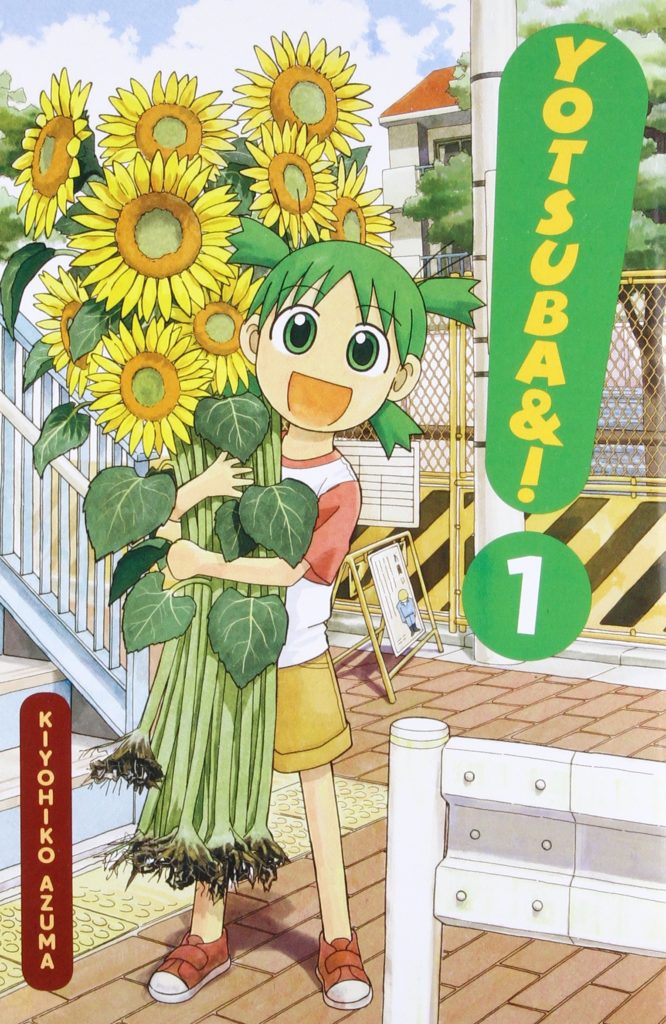
Tweens (Early Teens)
Kitaro, Shigeru Miuzki, Drawn & Quarterly
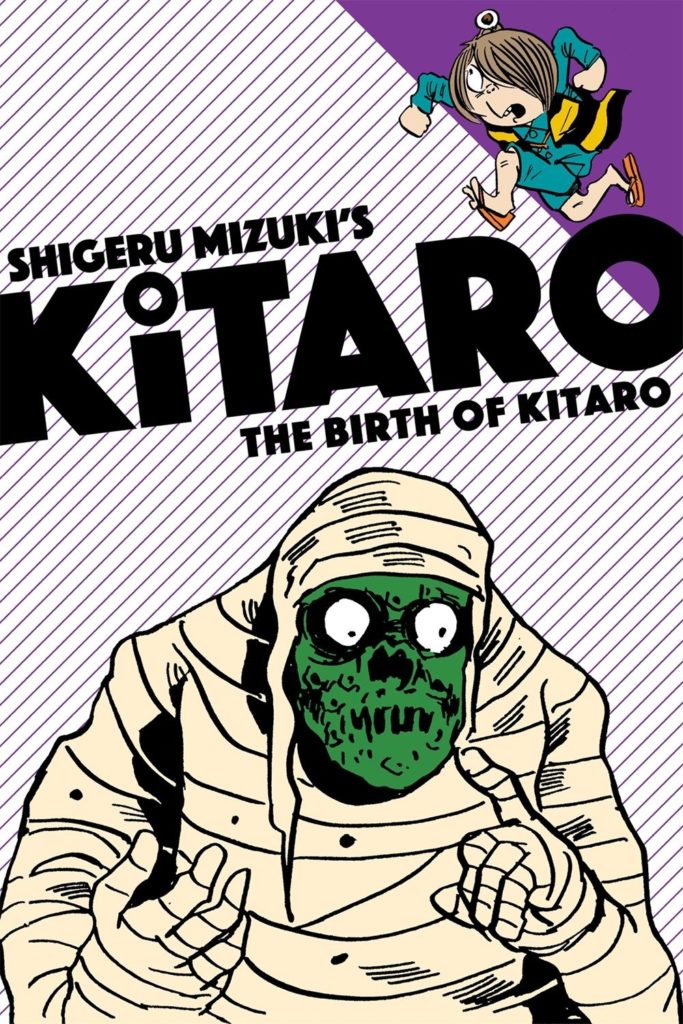
Witch Hat Atelier by Kamome Shirahama, published by Kodansha
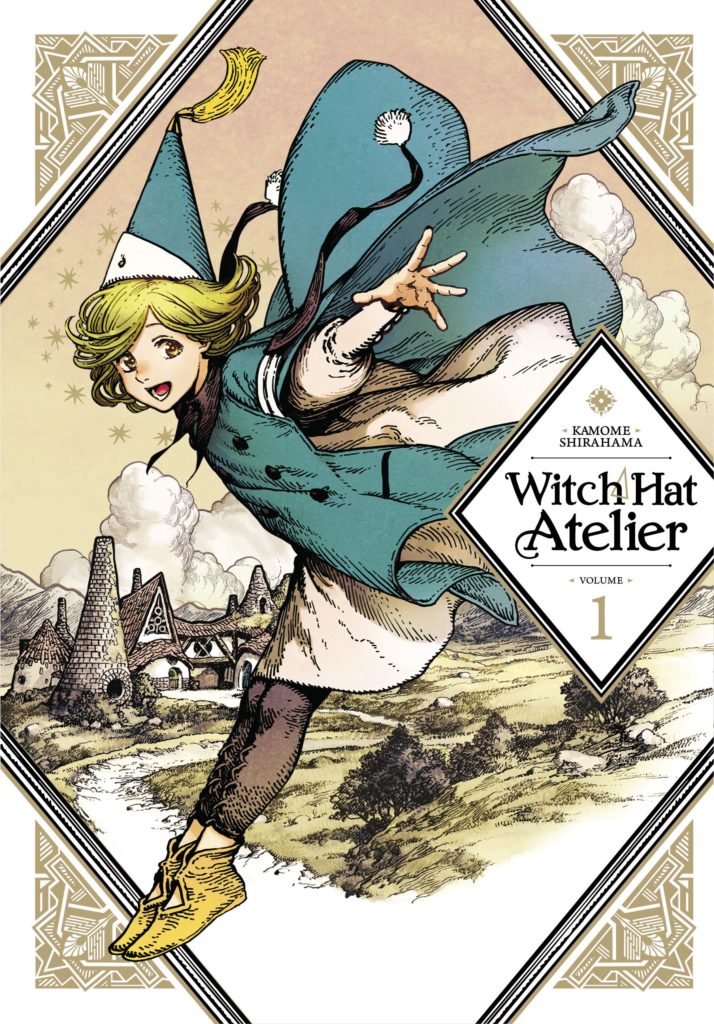
Bonus Shout-Out for Adults
Showa, by Shigeru Mizuki, Drawn & Quarterly. 100 years of Japanese history in four massive volumes, very very good (Christopher approves!).

Out of print manga spectacular quick-fire round:
- Jaco the Galactic Patrolman, by Akira Toriyama. VIZ Media.
- Fairy Idol Kanon, by Mera Hakamada. UDON Entertainment.
- Ninja Baseball Kyuma, by Shunshin Maeda. UDON Entertainment.
- Big Adventures of Majoko, by Tomomi Mizuna. UDON Entertainment.
- Hikaru No Go, by Yumi Hotta and illustrated by Takeshi Obata. VIZ Media.
So a huge thank you to our pal Eva for taking the time to do this! She’s the best, and you can find her on Twitter @funnypages:
Also, again, shout-out to local libraries and the librarians, library technicians, and library workers! They have tons of print and digital manga! And checking out books from them means that their circulation goes up and they get more money… to buy more books!
Now it’s time for us to select all new books for Chip to read!
Christopher chose the manga The Journal of My Father, by Jiro Taniguchi. Published by Fanfare Ponent-Mon. A man returns to his hometown to attend his emotionally distant father’s funeral. Through talking to his friends and family, he discovers a man he never really knew.
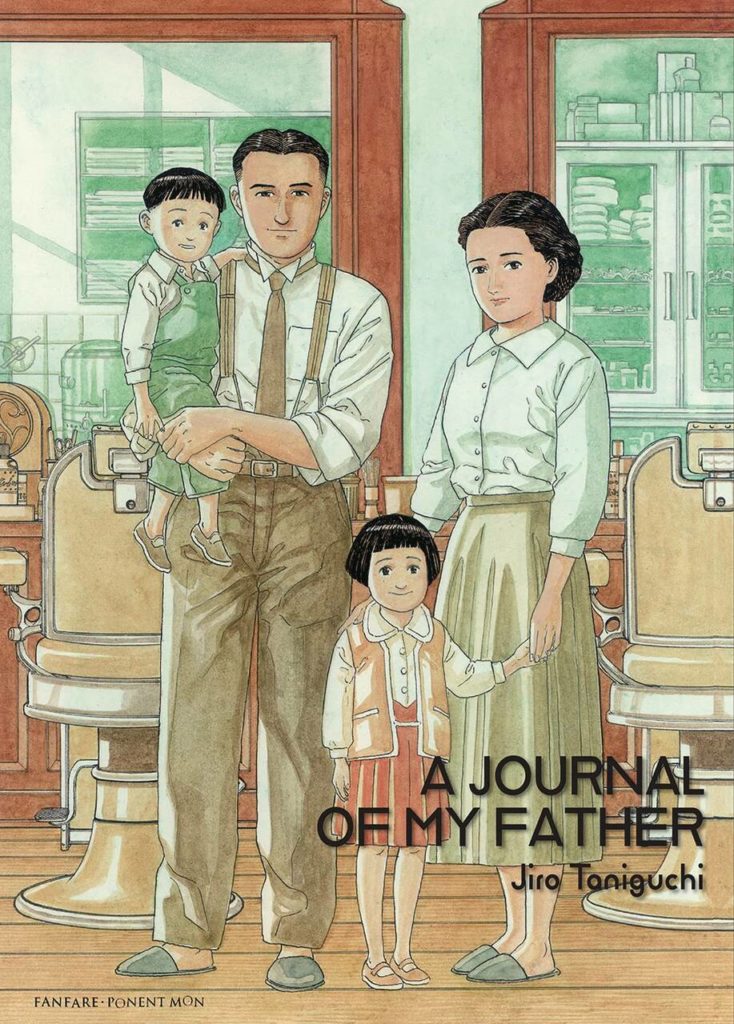
Deb has chosen a manga she recommends to everyone who wants to try manga, A Bride’s Story by Kaoru Mori, published by Yen Press. A historical, slice-of-life manga about a young woman living her life during the Ottoman Empire.
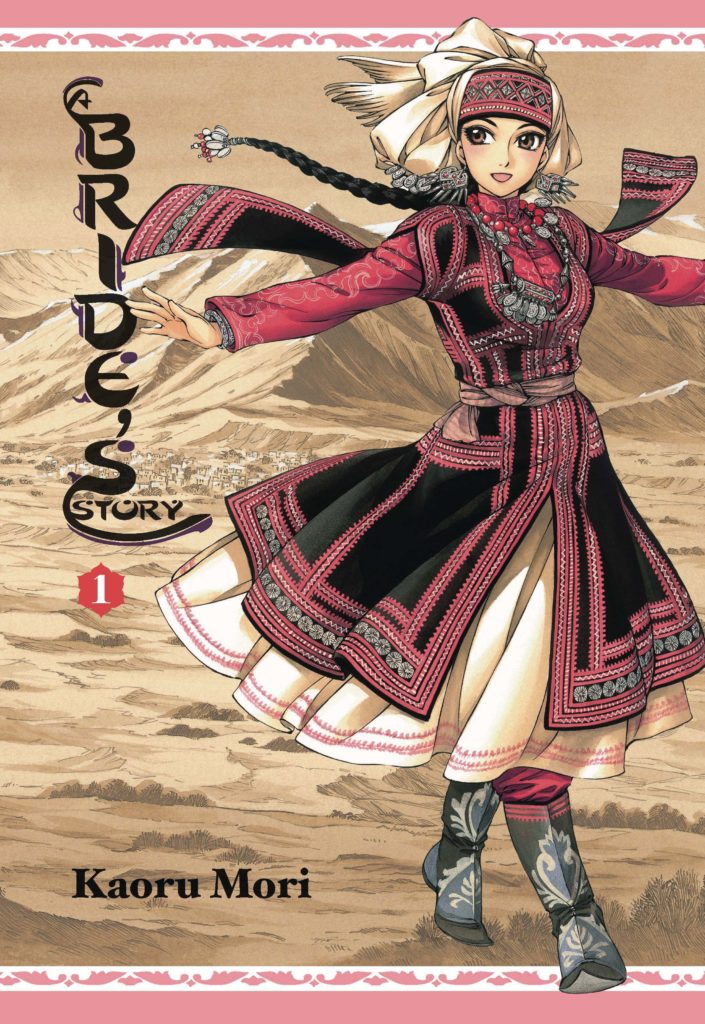
David picks something “low-brow” which is… Saint Young Men. It’s about early-20-something Jesus and The Buddha living together as roomates in modern Tokyo.
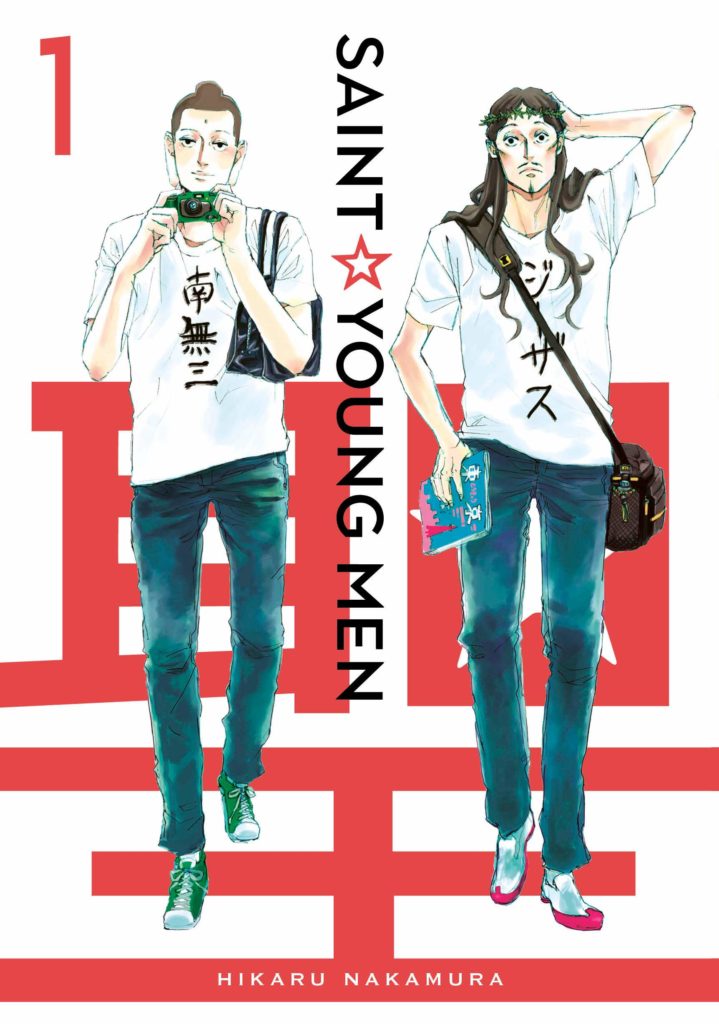
Which makes the next batch of manga that we’ll read includes:
- Ep. 16: The Strange Tale of Panorama Island, by Suehiro Maruo. Published by Last Gap. (June 1)
- Ep. 17: Even Though We’re Adults Vol 1, by Takako Shimura. Published by Seven Seas. (June 8)
- Ep. 18: Monthly Girls Nozaki-Kun Vol 1, by Izumi Tsubaki. Published by Yen Press. (June 15)
- Ep. 19: Yona of the Dawn Vol 1, by Mizuho Kusanagi. Published by VIZ Media. (June 22)
- Ep. 20: A Bride’s Story Vol 1, by Kaoru Mori. Published by Yen Press. (June 29)
- Ep. 21: Saint Young Men Vol 1, by Hikaru Nakamura. Published by Yen Press. (July 6th)
- Ep. 22: The Journal of My Father, by Jiro Taniguchi. Published by Fanfare Ponent-Mon. (July 13th).
Now it’s time for this week’s SHOUT-OUTS!
Deb’s Shout-Out is the manga Super Sentai: Himitsu Sentai Gorenger – The Classic Manga Collection, basically the origins of super sentai (a.k.a. Power Rangers) in manga from the 60s, by the incomparable Shotaro Ishinomori, published by Seven Seas.
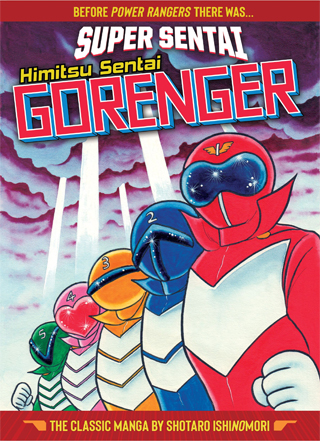
Christopher’s Shout-Out is to his friend and listener LN, who made him a beautiful little cross-stitch that he sees every week when he’s working on the podcast.
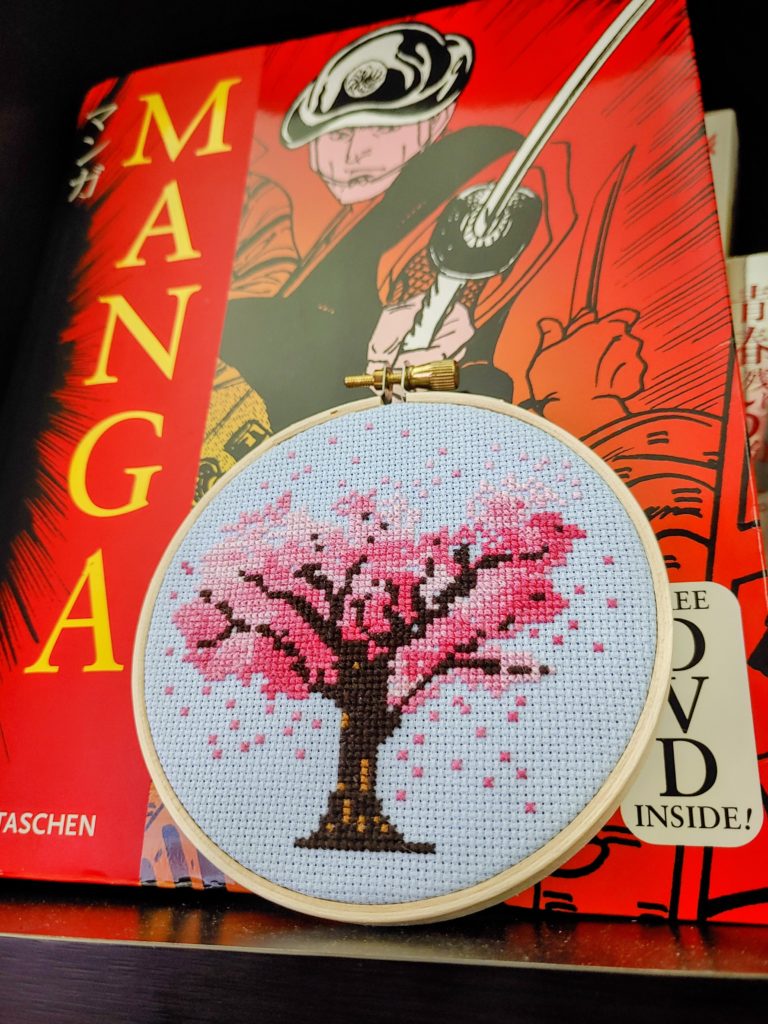
Christopher also hints that maybe Chip is a nice person, but we won’t get into that.
Chip’s shout-out is audio-only so that the search-bots don’t find this and start leaving shitty comments in the comments field. 🙂
—
And that’s it! Thanks for listening to this episode!
Thanks to our special guest Eva Volin, as well as to D.A.D.S. for their musical accompaniment! Find D.A.D.S. on Spotify.
Find a comic or manga specialty shop near you at Comicshoplocator.com.
See you next week on Panorama Island!
—
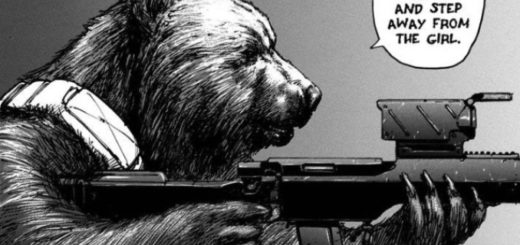
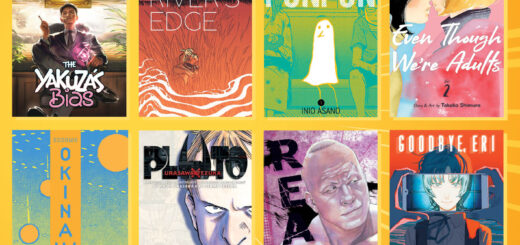
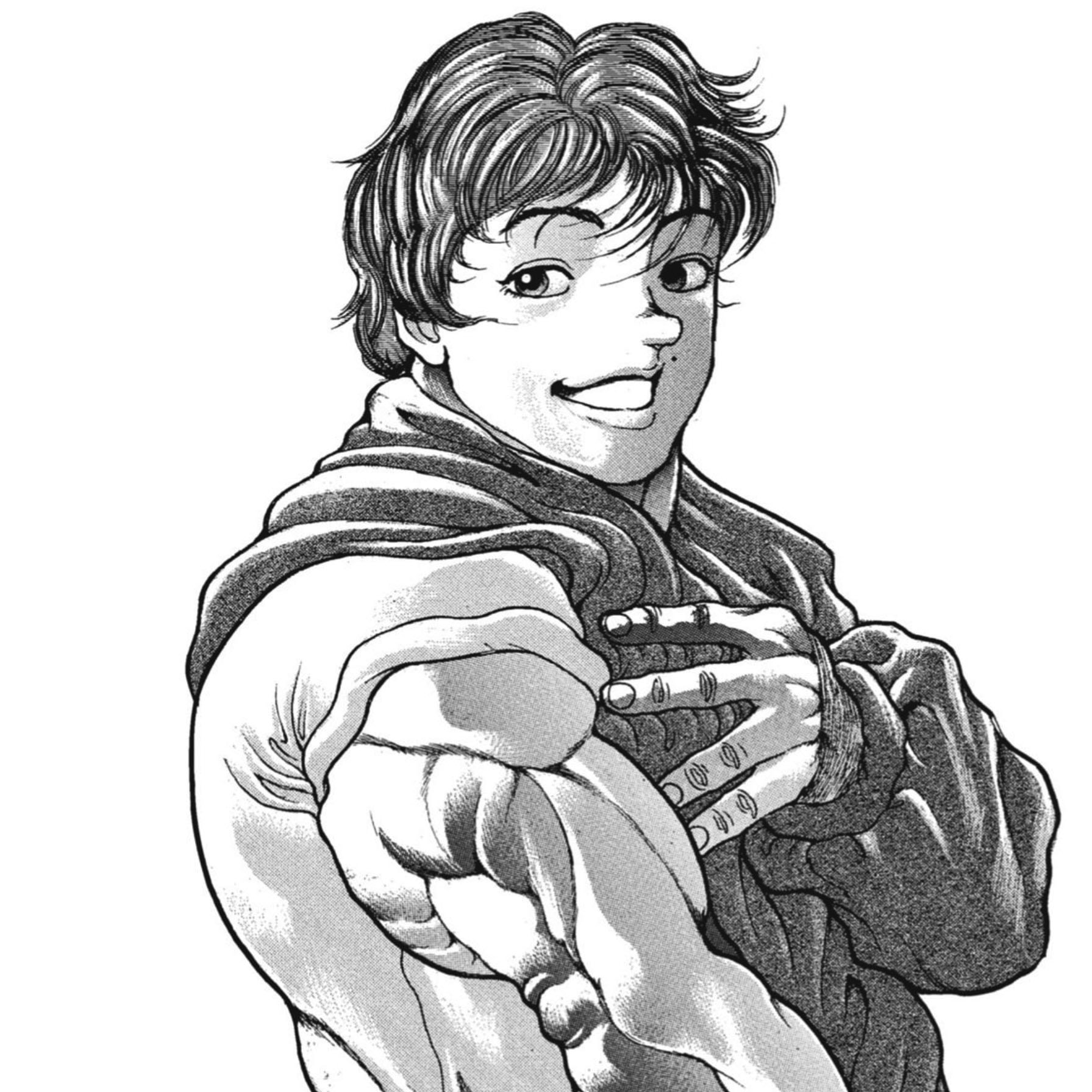
I’m still hoping you folks will do BL Metamorphosis. It’s so sweet.
Another great episode!
Thanks for the love Erica, much appreciated! 😀
What future light novels are you guys interested in covering? I’d be interested to see you guys cover the Itachi light novels but I realize the context needed is too much. Anyways I’m a big supporter of the podcasts!
I read In this Corner of the World last week. I think it could be a great book to check out (only 1 volume).
Thanks for another great episode.
About the change in characters/story from chapter 2 to chapter 3, please correct me if I’m wrong but when an author submits a manga to Shonen Jump to be a candidate for serialisation, isn’t the author supposed to provide three fully complete chapters? Meaning, chapters that should have already gone through the editorial process and been perfected and vetted by his editor, ready for publication? (That’s what I learned from reading Bakuman。 anyway.) So if that’s the case, then that would mean Kishimoto intentionally planned the odd shift from chapter 2 to 3.
Eva Volin mentioned that Udon Entertainment used to publish some kids manga. I remember those were from their MangaForKids dot com label. Udon’s Matt Moylan tweeted about them awhile ago saying that they were fairly successful sellers but their Japanese publisher went bust. It’s too bad. I do find it strange that there aren’t more kids manga that get licensed. It seems like a no-brainer given manga’s rise in popularity. (Gotta start ’em young!) But maybe English pubs think kids are already gravitating toward all the cool Narutos and Demon Slayers on the market and “actual” kiddie manga won’t be able to compete with those?
I just got caught up with this episode. Great episode as always! Naruto as Chip’s first foray into Jump’s series seems apt, since Naruto really has all the quintessential Jump’s shounen formula.
This makes me wonder if you’ll do an episode on Chainsaw Man at some point, since I feel like it’s one of very few series from Jump that feels like it was doing its own thing regardless of readers’ surveys (as Chris puts it, if I remember corectly). I feel like Chip’s going to like Chainsaw Man hahah.
I’ve fallen behind on a the show as I try to read ahead on some of the series you’ll be diving into. Impressive work with this episode. Reminds me of getting one of the planets in school to do a project/report on, and the kids who drew Earth always had the hardest time because the of the sheer volume of info available. I felt that’s what you faced when choosing to discuss one of the biggest shonen manga series in recent memory. Very impressed how you were able to find a hook for discussion, and tie the development of Naruto with the creation of shonen manga in general. Thanks for posting the videos with Kishimoto as well.
I remember a friend letting me borrow Naruto, and just being drawn in by the art from the action pieces to the backgrounds to the world-building details. The art and story inside really belied what the picture on the cover offered. Really, I would have never guessed it was comic about warring ninja tribes from that cover. And speaking of the covers, I loved the colored-with-markers look all the covers have. That hands-on feeling really brought something to them; you could feel the artist behind them.
Unfortunately, I think tapped out in the mid-40s, because the pacing and the twist-upon-twist-upon-twist just burned me out. Also, nothing like a 40-page exposition drop in the middle of what’s supposed to be a life-or-death fight. Too much after-the-fact setup just left me cold, although I enjoyed the ride up till then.
While you mentioned the various media Naruto was adapted to you missed that there was also a kabuki play. In fact this was the first kabuki play with ninja in it making it doubly unique.
https://naruto-kabuki.com/english2/
After a twenty year break the pandemic has brought me back to Anime and Manga. I flipping through Netflix and saw first half of Naruto so accessible so I picked up from where I left off and binged it all and finished the rest with my new subscription to crunchy roll. I am so amazed how much is now available now with all the subscriptions and streaming available. I am so Jealous for the youth today in terms of Manga and Anime. Although I am living my best life watching and Anime and now reading Manga.
Now in present day, I am a mother of two and my oldest is 8 years old and is getting into Anime and Manga too. So I really appreciate the Library in Segment. My daughter loved Card Captor Sakura. Now she is reading Newest Card Captor Clear Card (by Clamp) and read some Tsubasa Chronicles. Magic, action and Romance is light and sweet and I don’t cringe or worry when she reads it. Going back to Naruto – the sexy jutsu a minor concern but its more the premise of the story anchored on the fact Sasuke goes into the dark side because of whole family is massacred. This is what I explain when I recommend Naruto to other Parents.
I would like to shout out to The Toronto Library which has so many of the bigger titles you recommend. I heart Libraries soooo much. Thank you! And thanks for all the recommendation. Starting from the beginning of the podcast while I work decorating cookies.